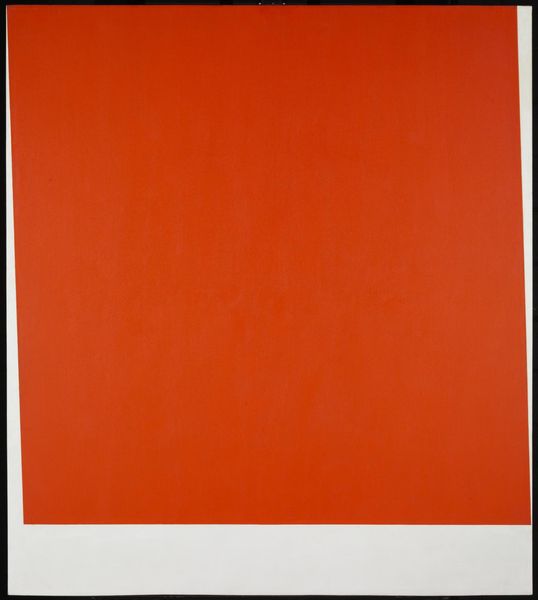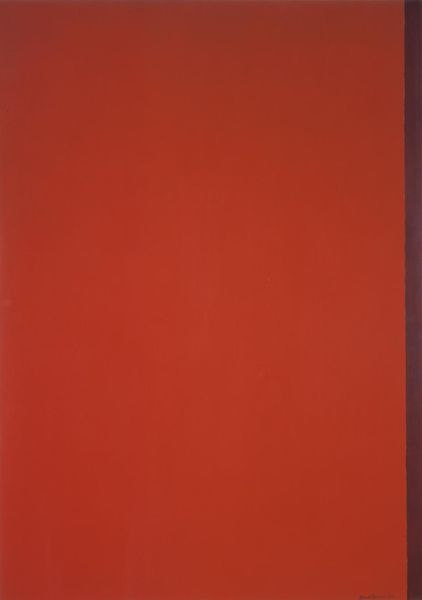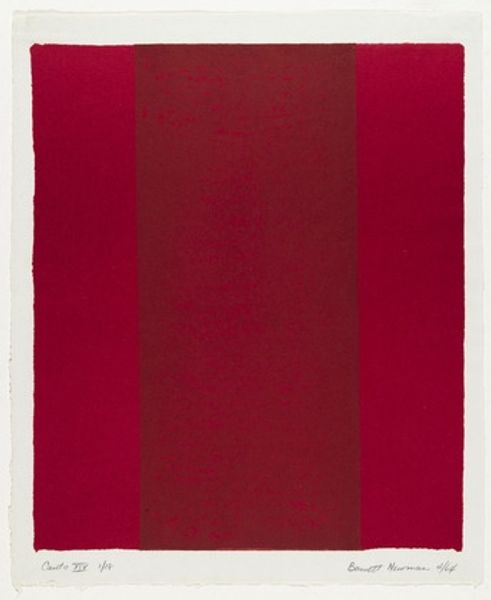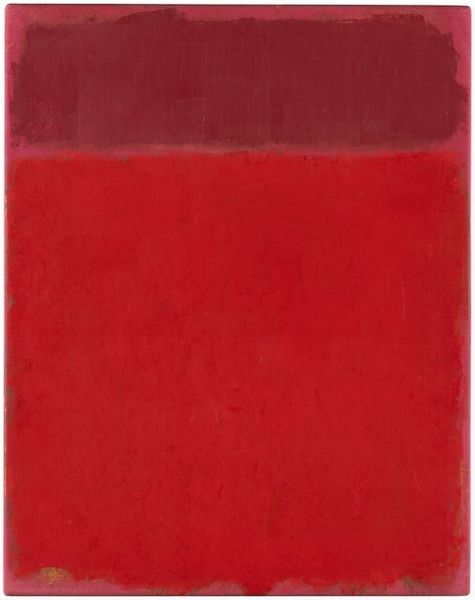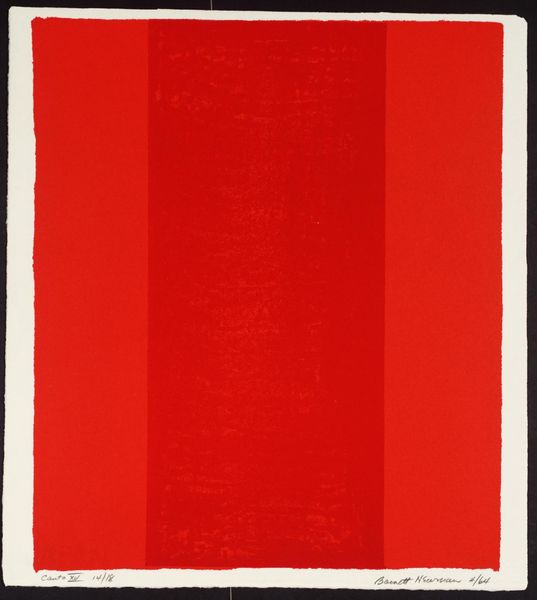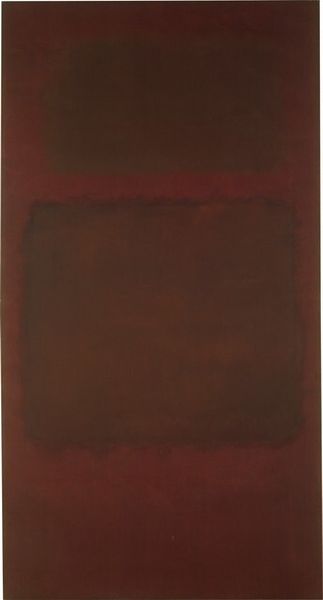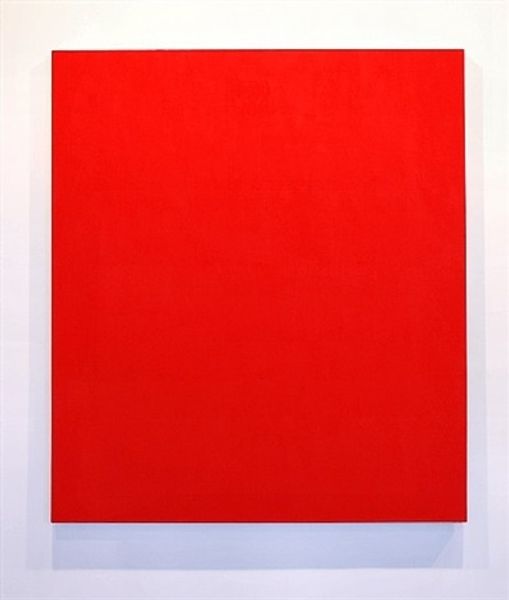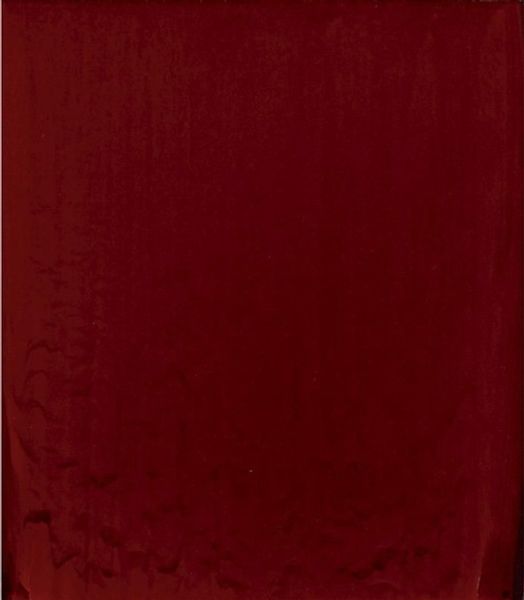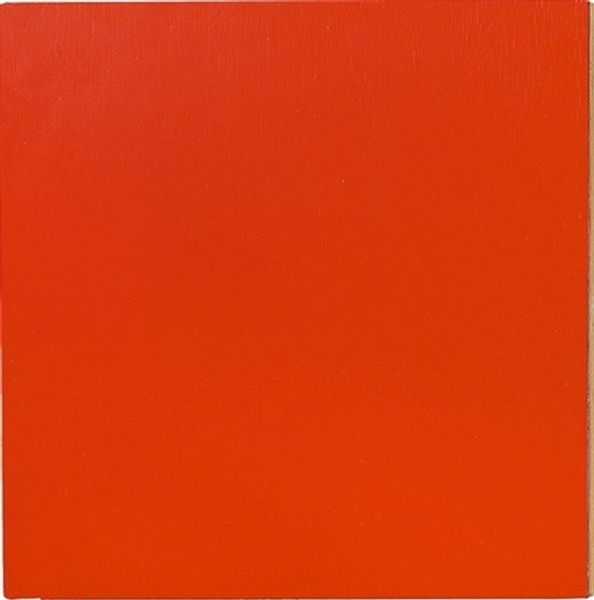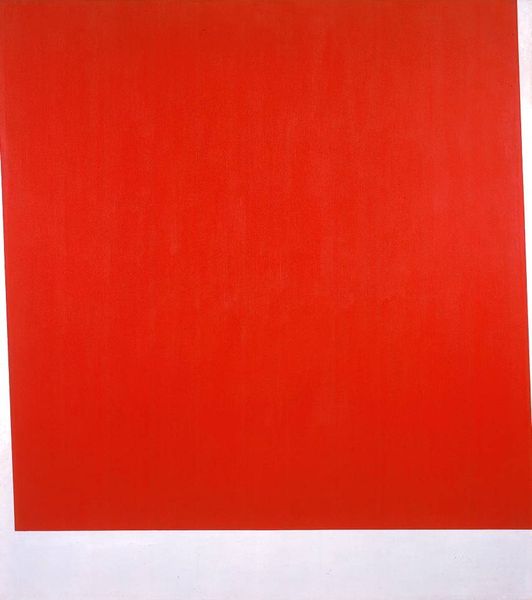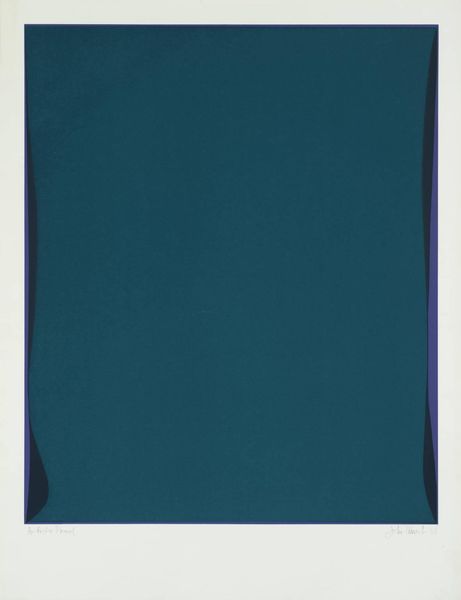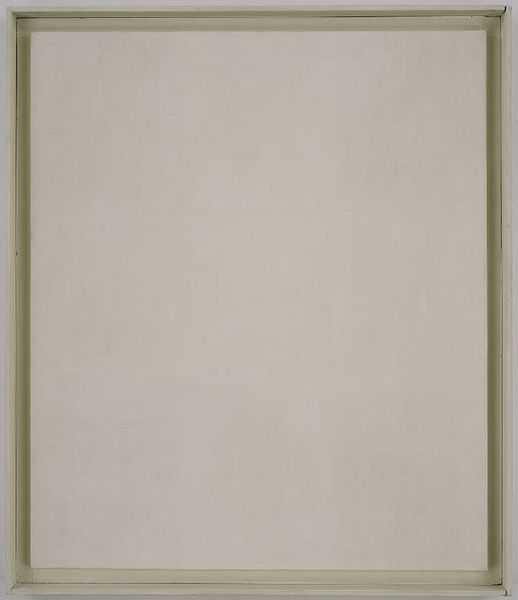
Copyright: Michael Heizer,Fair Use
Editor: Michael Heizer’s “Untitled No. 5,” painted in 1974, is a powerful example of color-field painting with just a large red rectangle floating within a cream-colored border. I’m immediately struck by how bold and simple it is, and yet I find myself strangely drawn in by it. What do you see in this piece? Curator: I see a continuation of the quest for the sublime through reductive means. That large expanse of red, bounded by the pale border, acts as a kind of icon. Think of the symbolic power of color, particularly red—blood, passion, sacrifice. The monochrome surface invites contemplation, doesn’t it? It almost dares us to project our own feelings and memories onto it. Do you sense any invitation? Editor: I can see what you mean by invitation – I think I find it interesting because it resembles, distantly, an entry-point, and feels solid like stone. But why strip away so much to arrive at such a primal form? Curator: Minimalism, at its heart, sought to eliminate the noise, the distractions, to get to the essence of perception itself. Here, Heizer isn’t just presenting a color, he’s offering an experience. Color acts as a portal, calling forth our most primal associations. What emotions arise as you focus on it? Editor: It is almost intimidating, a flat affect, yet there’s definitely a subtle warmth. It feels like an anchor, almost. Curator: Indeed. These stark geometries speak to archetypal forms, the building blocks of visual language itself, evoking our shared human experience. They function much like religious icons that focus our intention to experience the Divine. Editor: So much meaning from so little – that's amazing. I’ll never look at a monochrome painting the same way again! Curator: Indeed. Hopefully you'll continue to unlock new meanings from even the simplest form.
Comments
No comments
Be the first to comment and join the conversation on the ultimate creative platform.

